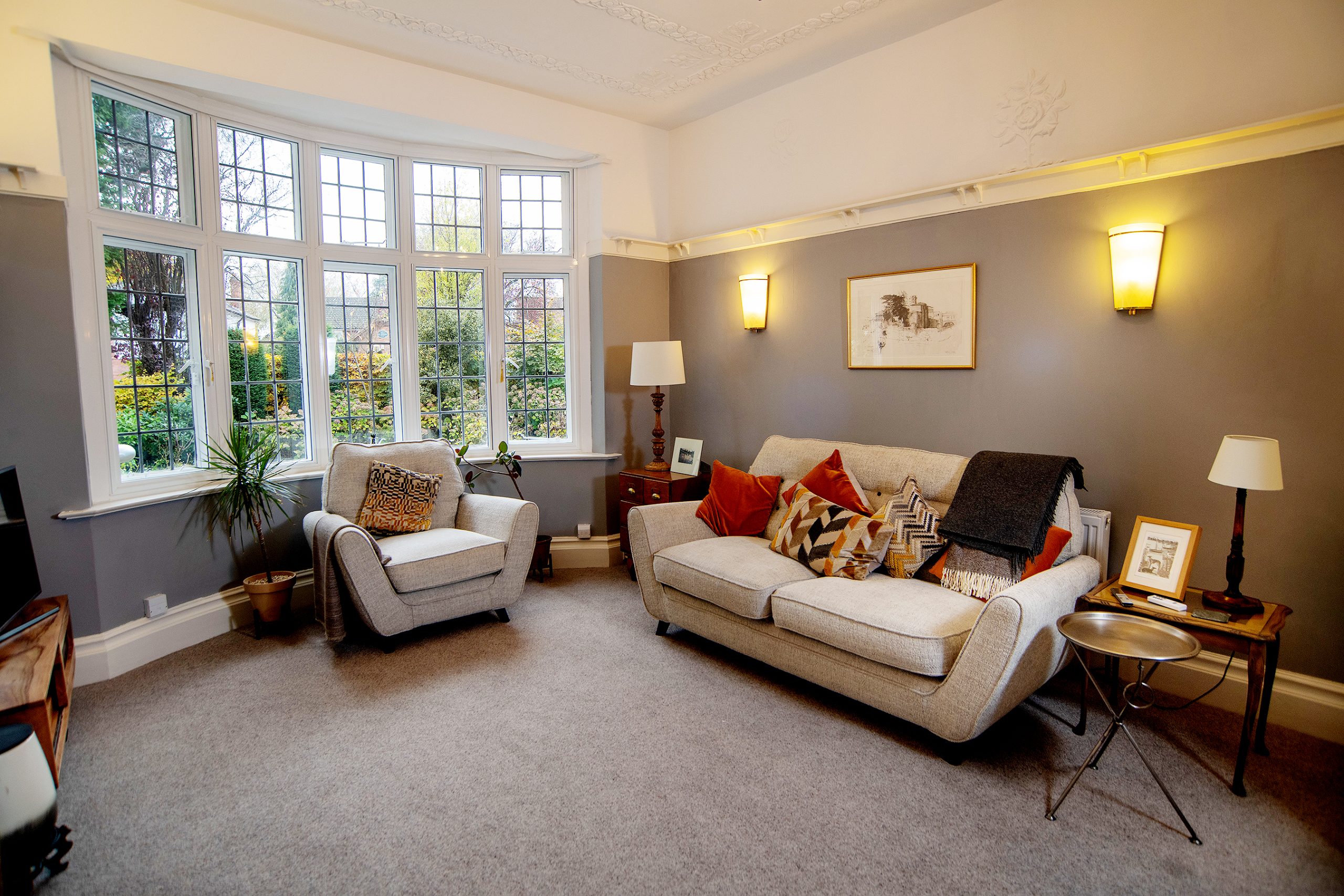When it comes to seeking the best energy-efficient windows, triple glazing is often seen as the obvious choice. However, upgrading from double-glazed windows by adding that third pane of glass also increases the price by around 20%. Not to mention the hassle and disruption of removal of the old windows and installing the new one.
So, is triple glazing worth it? And are there any cost-effective and high-performance alternatives? Happily, we at Granada Glazing believe the answer to the latter is ‘yes’. Here, we look at how triple glazing works, the principal benefits it offers and assess the comparison with the performance of secondary glazing.
What is triple glazing?
As its name suggests, triple glazed windows have three glass panes separated by two gaps of around 16mm wide that contain either air or an inert gas, such as argon. Whereas single glazed windows have one pane of glass and double glazing has two.
Triple glazing works in the same way as double glazing; the small gaps between the glass act as an additional barrier making the window more effective against noise intrusion and heat loss.
However, it is the five layers in triple glazing – three glass panes and two air or inert gas-filled gaps – that can deliver a range of apparent benefits. The two main ones are:
Heat loss
A key reason why homeowners opt for triple glazing is that it reduces heat loss, making it easier to maintain a comfortable temperature within the property. The extra pane of glass and an additional air gap makes it more difficult for heat to escape through triple-glazed windows.
This improved insulation reduces the need for heating as much, potentially leading to lower energy bills and saving you a substantial amount of money over the years – particularly relevant in the current cost of living crisis.
Reduces external noise
Due to their heftier construction, triple glazed windows are heavier and thicker than double glazed ones. Typically, the units are around 44mm in width, comprising three 4mm panes and two 16mm cavities. Although that third pane creates more of a barrier to sound waves passing through, it is not necessarily the most effective way to reduce noise in your home – as we’ll discuss below.
Secondary glazing versus triple glazing
While triple glazing involves the complete replacement of your single or double-glazed windows with new units, secondary glazing does not affect the existing window at all. Aluminium secondary glazing involves installing a discreet internal window in addition to the existing primary window with minimum disruption.
Modern slimline frames, like the Granada Secondary Glazing system, are unobtrusive when viewed from the inside and have no visible impact on the external appearance of a building. This makes secondary glazing a preferred choice for improving the thermal and/or acoustic efficiency of listed and heritage buildings where planning restrictions invariably prevent the replacement of the original windows. Additionally, many homeowners enjoy the visual appearance, charm and character that traditional windows bring to the building and want to keep them.
Superior heat retention
Expertly fitted secondary glazing provides a virtually invisible unique barrier that can improve thermal performance by up to 65% and lower energy bills.
A well-sealed independent frame ensures minimum air leakage, creating an insulating layer to prevent warmth escaping. Low-E glass is often selected as this has a special coating to reflect heat back into the room, further enhancing thermal insulation.
Effective noise reduction
Secondary glazing is a high performance and cost-effective way of curing external noise problems in all types of residential properties, including listed and historic buildings.
Fitted in addition to an existing single, double or even a triple glazed window, secondary glazing is a most effective way of cutting out external noise. When correctly installed, sealed and set the optimum distance from the internal face of the primary window, it can reduce noise levels by up to 80% or the equivalent of 54dB, eliminating outside noise from sources such as traffic, railway lines and aircraft.
Cost-effective performance
So, is triple glazing worth it? That really depends on what you want to achieve for your property, your budget and if you’re willing to replace your windows.
However, as an affordable, discreet and high-performance way to solve thermal and noise issues in all types of properties, secondary glazing is an excellent option that could be right for you.
If you are considering energy-saving improvements for your windows, why not give our friendly team at Granada Secondary Glazing to discuss your project.
